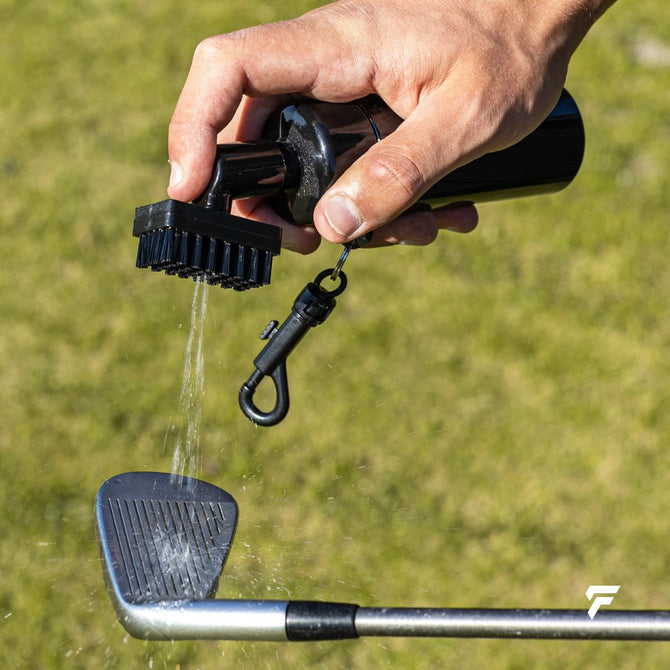
How to Play Golf Pain-Free: Tips for Injury Prevention
Golf is a rewarding but physically demanding game that can take a toll on your body if proper care isn’t taken. By prioritizing warm-ups, flexibility, and smart mechanics, you can play your best while staying pain-free. Here are actionable tips to help you prevent injuries, whether you’re on the course or training at home.

1. Warm Up Before Every Round
Starting cold can make muscles more prone to strain, so warming up thoroughly before hitting the course is essential. Warm muscles have better elasticity, reducing the risk of injury and improving performance.
- Tip: Begin with 5-10 minutes of light aerobic activity (like brisk walking) to get your blood circulating. Follow this with dynamic stretches, such as arm circles, leg swings, and torso twists.
2. Build Core Stability and Strength
A stable core protects your lower back and shoulders, two areas vulnerable to repetitive strain. Core strength not only enhances your swing power but also keeps you stable throughout your swing.
- Routine: Add planks, Russian twists, and leg raises to your workout routine to build core endurance. Practicing rotational movements with the FlexClub can also reinforce both strength and flexibility, essential for a stable, powerful swing.

3. Improve Your Tempo with the Velocity Grip
Good tempo is essential not only for control but also for preventing injuries caused by jerky, rushed swings. An even tempo reduces unnecessary strain on your shoulders, wrists, and back.
- Drill: Try slow backswing drills, focusing on building up speed smoothly through impact. The Velocity Grip provides instant feedback with a click sound at peak speed, helping you develop a smooth, repeatable tempo that supports both distance and injury-free swings.

4. Prioritize Shoulder Flexibility
Limited shoulder flexibility increases strain on other parts of the body as they try to compensate, which can lead to injury over time. Maintaining flexibility ensures that your swing is smooth and unhindered.
- Stretching: Include exercises like shoulder circles and chest openers to keep your shoulders flexible. These stretches release tension and allow for a full, natural swing without extra strain on your joints.
5. Maintain Proper Wrist Flexibility and Strength
Wrist strength and flexibility are critical for a stable grip and control over the clubface, which helps prevent strain during impact. Flexible wrists can absorb impact and help reduce stress on your arms and elbows.
- Exercise: Incorporate wrist curls and grip exercises, and perform gentle wrist stretches. Practicing wrist mobility and grip strength can keep your wrists healthy and strong for consistent, pain-free play.
6. Train at Home for Flexibility and Injury Prevention
If you can’t always make it to the course, home training is a great way to maintain flexibility and strengthen key muscle groups. Practicing at home with targeted tools keeps your body conditioned and improves your swing mechanics over time.
- Home Practice: Use the FlexClub and Turner Pro to increase flexibility and build strength. These tools help replicate golf movements safely at home, allowing you to focus on core stability, shoulder mobility, and balance without needing a full course setup.

7. Focus on Proper Swing Mechanics
Efficient swing mechanics reduce strain on your joints and prevent common injuries to the back, shoulders, and wrists. Smooth, controlled movements distribute the swing’s force evenly across your body, protecting vulnerable areas.
- Practice: Work on keeping a steady, rhythmic swing with a balanced follow-through. Practicing with the Turner Pro helps you develop the rotational power necessary for a strong, injury-free swing.

8. Use Ground Force for Balance and Power
Engaging ground force, or pushing off the ground during the swing, creates a stable base and allows you to generate power without over-rotating or straining your back.
- Tip: Focus on pressing into the ground with your lead foot during your downswing. This creates stability and takes pressure off your upper body, allowing for a balanced, controlled swing.
9. Incorporate Post-Round Recovery
Post-round recovery is crucial for alleviating muscle tension, improving flexibility, and reducing soreness. Gentle stretching and cooling down allow your body to release any tightness accumulated during play.
- Recovery: Include stretches for your back, hips, and shoulders to ease tightness. Foam rolling is also effective for muscle relaxation, and a short, gentle walk reduces muscle soreness.
10. Hydrate and Fuel Your Body Properly
Dehydration can decrease flexibility and focus, making your muscles more susceptible to strain. Fueling your body with water and balanced meals supports energy and keeps your muscles healthy.
- Tip: Drink water throughout your round and consider snacks rich in protein and healthy fats to maintain energy levels and keep your muscles fueled.






